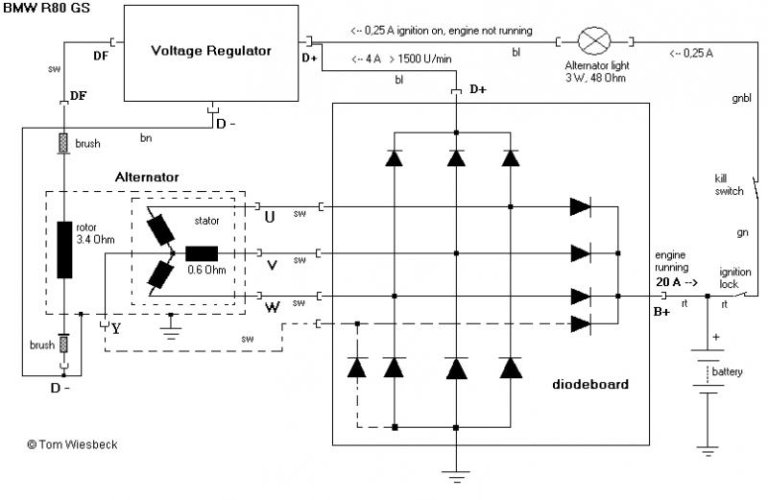Good morning electrical wizards-
I just replaced a failed battery and my voltmeter is showing no charging taking place. Readout is 12.8V after being on the battery tender all night the. It steadily drops to 12.1V while I’m riding. I shut it down at this point. The battery warning light never lights up indicating charging.
Ive checked and cleaned all connections, replaced the voltage regulator, checked brush’s and contacts on the alternator and diode board. I just noticed the battery warning light does not come on when I switch the key on so I’m suspecting a burned out bulb. Reading Snowbum’s site this should not prevent the battery from charging unless I’m reading this wrong.
Any ideas?
Thanks,
Charlie
I just replaced a failed battery and my voltmeter is showing no charging taking place. Readout is 12.8V after being on the battery tender all night the. It steadily drops to 12.1V while I’m riding. I shut it down at this point. The battery warning light never lights up indicating charging.
Ive checked and cleaned all connections, replaced the voltage regulator, checked brush’s and contacts on the alternator and diode board. I just noticed the battery warning light does not come on when I switch the key on so I’m suspecting a burned out bulb. Reading Snowbum’s site this should not prevent the battery from charging unless I’m reading this wrong.
Any ideas?
Thanks,
Charlie


